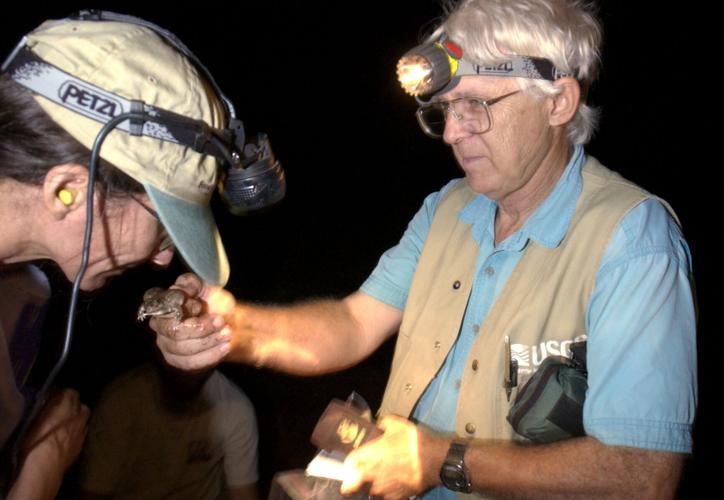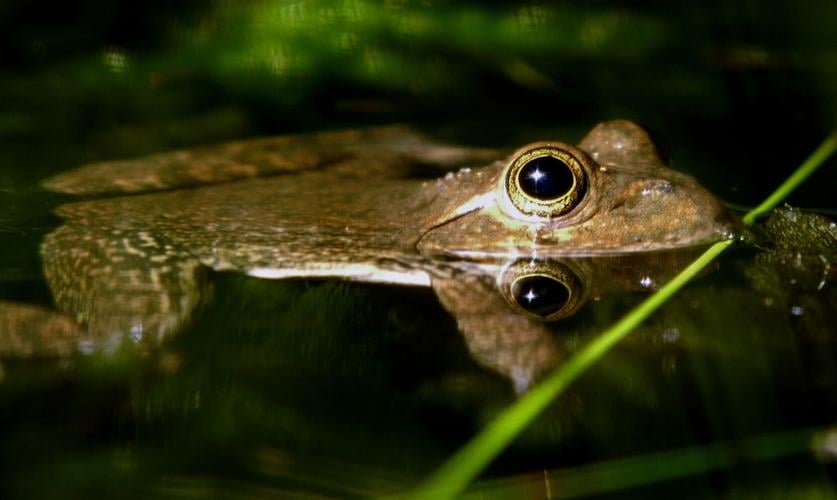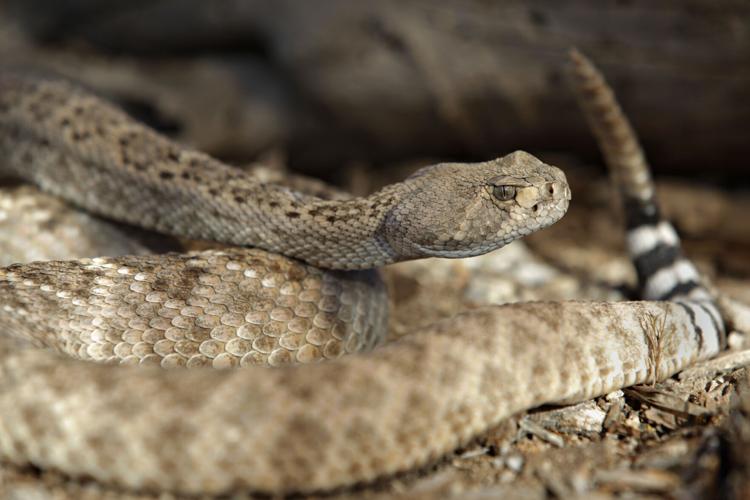Some people called him Snakeman, but Cecil Schwalbe was so much more than that.
He also really liked lizards.
The career scientist and teacher kept a room full of reptiles at his Tucson home, some of them venomous. He also cared for native frogs in a pond out back, several Sonoran Desert tortoises and a decades-old Gila monster named Pancho Gila he would bring with him to educational presentations.
The man who served as Arizona’s first state herpetologist died in Tucson on April 3, the day after his 80th birthday.
“Cecil was legendary,” said Don Swann, a long-time biologist at Saguaro National Park. “He was a great conservationist, who contributed so much to reptiles and amphibians, two things that not everyone likes very much.”
Swann first met Schwalbe about 30 years ago and studied under him as a graduate student at the University of Arizona starting in 1993.
“One of the greatest things that ever happened to me was when I was accepted into his lab,” Swann said. “It was a great honor.”

Cecil Schwalbe was Arizona’s first state herpetologist and a career scientist and educator, dedicated to the study and conservation of reptiles and amphibians.
Schwalbe also mentored young scientists outside of the UA.
Robert Villa is a self-taught naturalist and president of the Tucson Herpetological Society. He said Cecil took him under his wing when he was still a student at Tucson High School.
Shortly after graduation, Villa found himself in the field with Schwalbe and his students, wading through hip-deep water in the middle of the night at Buenos Aires National Wildlife Refuge or catching elusive frogs after monsoon downpours at Coronado National Memorial.
“He was a really good storyteller,” Villa said. “There was never a dull conversation or car ride with Cecil.”

A Tarahumara frog, which had disappeared from Arizona more than 20 years ago, peeks out from the home pond of Cecil Schwalbe in 2003.
Schwalbe was born April 2, 1942, in Lubbock, Texas, and grew up in Dallas, where he developed an interest in nature at an early age. As a third-grader, he wrote to every game and fish department in the country, asking for information about wildlife, according to a tribute to him posted by the U of A School of Journalism, where his wife, Carol, is a professor and the former director.
He later became an Eagle Scout and served in the U.S. Army during the early days of the Vietnam War.
After the Army, he studied mechanical engineering at Rice University, then environmental science and ecology at Washington State University. He moved to Tucson to earn his Ph.D. in zoology and physiology from the UA, and he wound up teaching there for many years while working as a scientist for the Arizona Game and Fish Department, the National Park Service and the U.S. Geological Survey.
Schwalbe took a particular interest in the study and protection of local native species such as the desert tortoise, Gila monster, Chiricahua leopard frog, lowland leopard frog and a type of rarely seen barking frog in the Huachuca Mountains nicknamed the “limestone troll.”
The co-author of “The Venomous Reptiles Of Arizona” once famously said that “anyone who gets bitten by a Gila monster deserves it,” then got himself bitten by one during a presentation.
He was also sprayed in the face with the venom from a spitting cobra and narrowly escaped a bite while feeding a captive rattlesnake.
His sometimes-risky, mostly rewarding work earned him numerous honors, including the Jarchow Conservation Award from the Tucson Herpetological Society in 1997, the Emil W. Haury Award from the Western National Parks Association in 2015 and the Charlie Painter Memorial Award from the Southwest Partners in Amphibian and Reptile Conservation in 2021.

Cecil Schwalbe, a USGS herpetologist, feeds bugs and spiders to the frogs in his home pond in 2003.
Technically, he retired in 2013, but his interest in wildlife and his work on its behalf never really stopped.
He lived about a half mile from the Saguaro National Park boundary and less than 2 miles from the park’s Rincon Mountain Visitor Center, so Swann said they saw him or heard from him often.
Schwalbe would call Swann to brag about how much invasive buffelgrass he had pulled from his neighborhood or to report with excitement when his backyard frogs started calling out for mates.
Swann continued to rely on Schwalbe’s expertise throughout his own professional career. Though he considers himself pretty knowledgeable about reptiles and amphibians, Swann said he frequently called his mentor to double-check a fact or solicit an opinion.

"Kenny", a 4 foot long western diamondback rescued from a neighbor's porch by United States Geological Survey herpetologist Cecil Schwalbe in 2010. Schwalbe kept the snake for scientific demonstrations, and for show at professional lectures.
“He was an encyclopedia of knowledge,” Swann said, especially when it came to lizards, snakes, frogs and tortoises.
He was also “hilarious and relentlessly enthusiastic” about just about everything he did, Swann said. “You could hear Cecil coming from a mile away because of his laugh.”
Once during field work at San Bernardino National Wildlife Refuge, a lost researcher found the way back to camp by following the sound of Schwalbe’s familiar, three-part chuckle as it echoed across the valley, Villa said. “Cecil really never let anything get in the way of a good time or something that needed to be done for a species.”

U.S. Geological Survey herpetologist Cecil Schwalbe, left, in the gila monster science tent at 2011 BioBlitz at Saguaro National Park.
Schwalbe is survived by his wife, Carol Bittig Schwalbe, sister Nanette Schwalbe Alvarez, sons Adam Benjamin Schwalbe and Ethan Hastings Schwalbe, their mother Diane Hastings Hileman, granddaughters Sarah Abigail Schwalbe and Cecilia Ann Schwalbe, and their mother, Lani Diane Rich.
A celebration of his life will be held at 10 a.m. May 14 at the UA’s Environment and Natural Resources 2 Building and streamed live on Facebook at http://tucne.ws/1k9n. Anyone wishing to attend should RSVP by May 7 at http://tucne.ws/1k9o.
Donations can be made in Schwalbe’s name to the Cold-Blooded Research Fund at the UA’s School of Natural Resources and the Environment at https://give.uafoundation.org/cecilschwalbe.
Money from the endowed fund supports research awards for students and faculty members who are studying amphibians, reptiles or fish.










